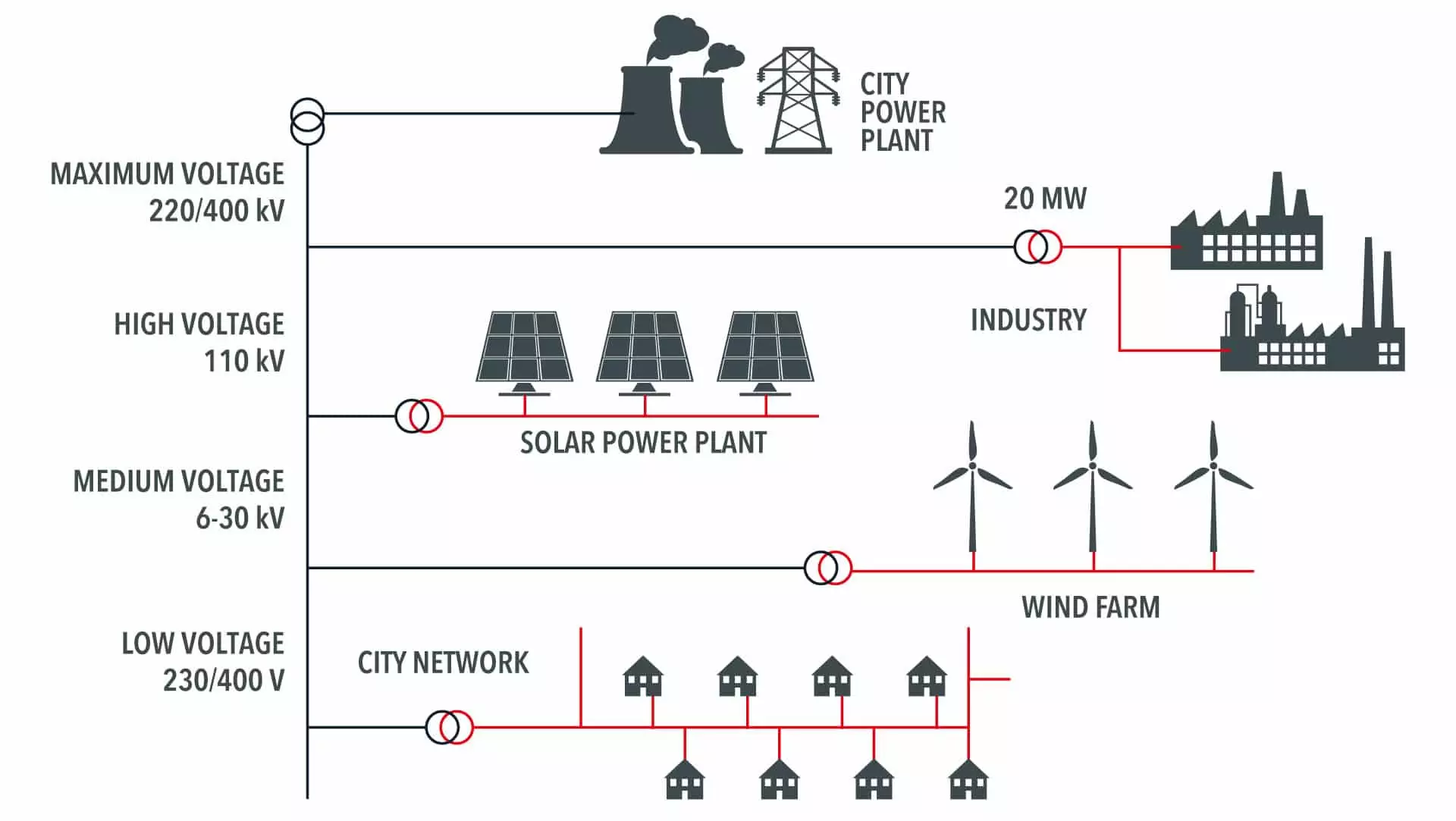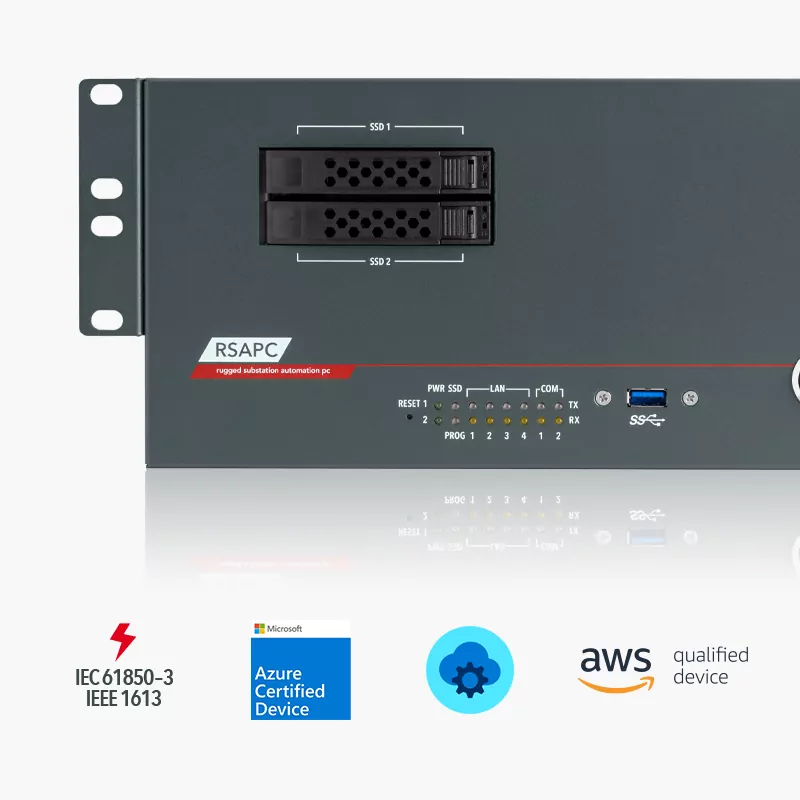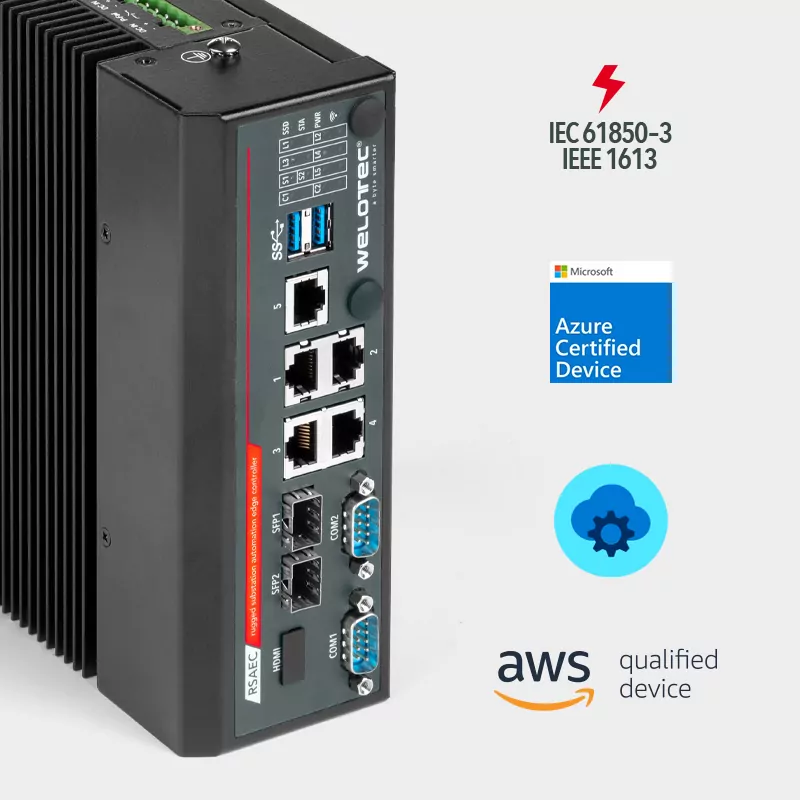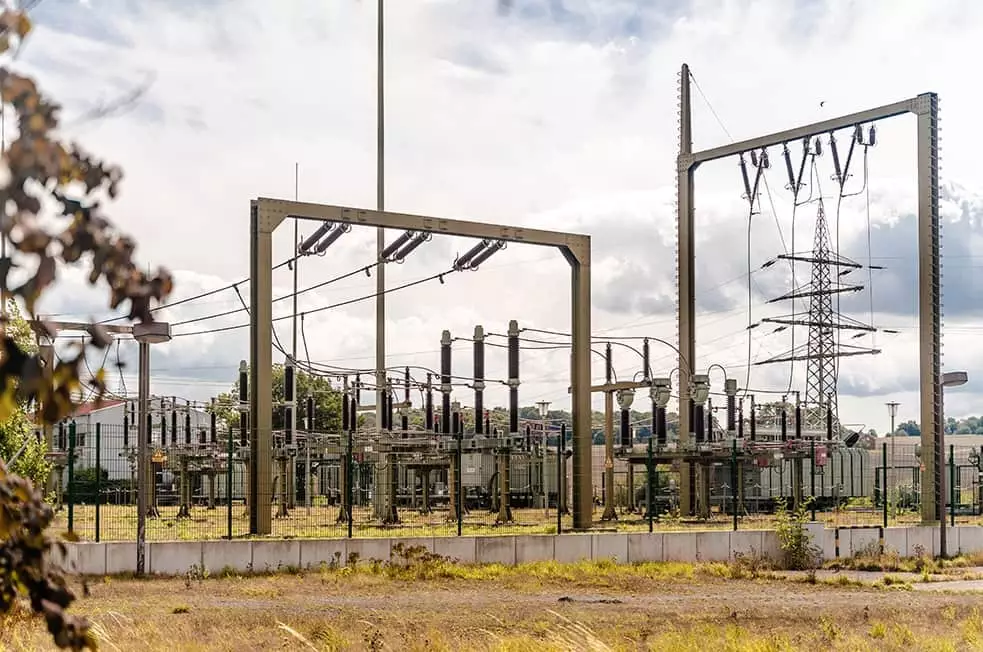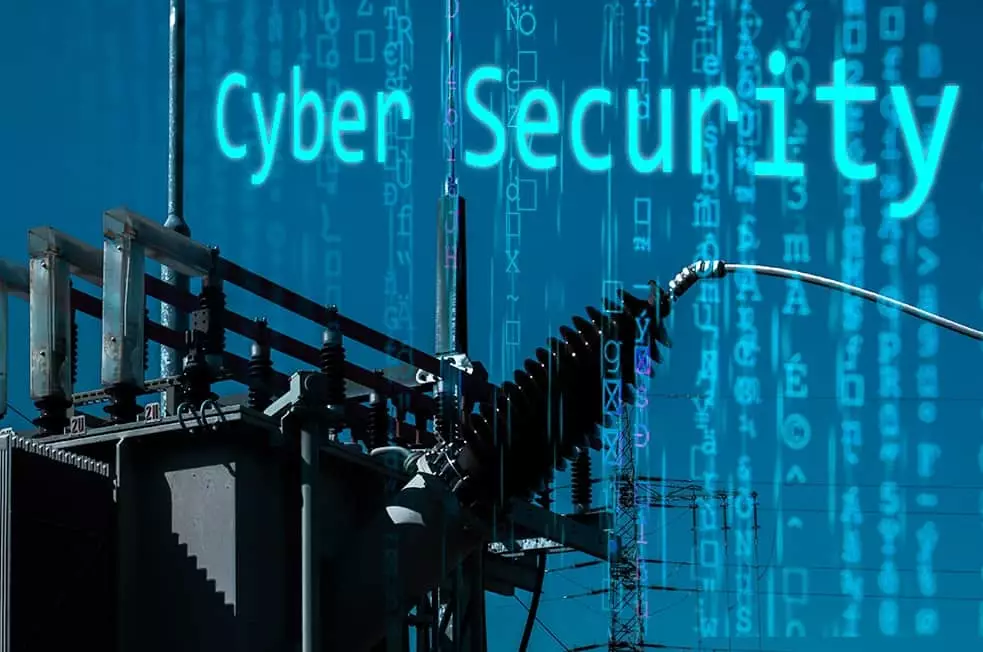Automation and digitalization in substations and utility networks
IEC 61850 in Substation Automation
In future energy systems, renewable, decentralized energy suppliers will play an important role at any voltage levels. A high degree of automation is required to ensure reliability of supply and efficient operation. In order to stabilize the grid or to be able to react to fluctuating inputs, considerably more computing power must be integrated into 400kV substations and local network stations/transformer stations.
The basic prerequisites for a high degree of automation are a future-proof IT architecture in all parts of the power grid and a common “language” for all components of the power grid. This, together with some other advantages, is achieved by the IEC 61850 standard. Among other things, it defines:
- The communication protocol and cross-manufacturer interoperability
- Ambient conditions such as temperature, electromagnetic compatibility and vibration
- Simplified, future-proof cabling of components in transformer stations
IEC 61850 Substation Architecture
A switchgear consists of different intelligent electronic units (IED) for switches, transformers or measuring equipment. All these devices must be able to communicate with each other. Each one can trigger time-critical actions, such as disconnecting a load connection. The IEC 61850 standard series divides these switchgear systems into three levels and describes the communication protocol between the functions of the switchgear system:
The Process Level contains devices such as circuit breakers or data acquisition devices for current, voltage and other parameters. This is where the electrical energy is switched.
The Bay Level consists of the individual IEDs. They process the data supplied by the process level and make local control decisions. They also transmit data for further processing and monitoring to the higher-level control and data acquisition system, the SCADA system.
The Station Level contains the SCADA system as well as operating and monitoring devices (HMIs) for monitoring the operation of a substation. In addition, the connection to the network control system of the network operator takes place from here via various WAN technologies.
Communication protocols between the individual levels
The individual elements on the different levels of a substation have different communication requirements. At the lower levels, at the process level, low latency times are important for the greatest possible autonomy of operations. This requirement does not exist in the communication between bay and station level or exists in an attenuated form. Therefore, the IEC 61850 standard defines three forms of communication:
MMS Protocol (Manufacturing Messaging Specification): Communication between SCADA and IEDs
Goose (Generic Object Oriented Substation Events): Horizontal, direct communication between the individual IEDs
SMV (Sampled Measured Values): Vertical communication between the individual IEDs
Advantages of the IEC 61850 standard – Why should you invest in an IEC 61850 substation?
Simplified architecture
The individual components of a substation no longer have to be wired using individual copper cables, but are connected to each other via an Ethernet network instead.
Digital twin of a substation
By using the IEC 61850 standard, it is possible to test stations already during the planning phase using the data model. This simplifies the planning and commissioning of such a network node.
Manufacturer independence
The common series of standards ensures interoperability between components from different manufacturers.
Future-proof design
By using an Ethernet-based network, existing systems can easily be adapted to future requirements.
High reliability
By defining environmental conditions in IEC 61850-3, the devices can be optimized and tested for the harsh environmental conditions in substations. The use of redundancy technologies such as HSR/PRP results in higher availability and thus greater network reliability.
Direct communication between IEDs
The Goose and SMV.
IEC 61850 Substation Computer – applications and virtualization
Control systems are usually located at the upper station level and perform a large number of functions there. First of all, the local SCADA (Supervisory Control And Data Acquisition) system runs here, which orchestrates and monitors the processes in the substation. In addition, different software can be used for power quality analysis (PQ analysis) or other logging functions.
In order to avoid that malfunctions of one element are transferred to the other components, the individual software elements must be isolated from each other. Physical isolation, i.e. the installation of the individual software components on their own computers, is the most maintenance-intensive and costly variant. The more cost efficient solution is therefore to separate the applications via virtualization on a computer with sufficient computing power and to set up this computer redundantly via HSR/PRP networks.
IEC 61850-3 for control technology in substations
Part 3 (IEC 61850-3) of the IEC 61850 series of standards contains detailed descriptions of the environmental conditions and the associated hardware requirements in substations. Compliance with the IEC 61850-3 standard is therefore mandatory for any form of hardware in substations in order to ensure safe operation of the components. The core elements of the defined environmental conditions are:
- Protection against electromagnetic interference: Unprotected devices can quickly be damaged or destroyed.
- Protection against strong temperature fluctuations: In a substation, it can be as cold as -40°C in winter. Temperatures of up to +75°C may occur in summer. Especially Computers without active cooling must therefore be designed with particular consideration for thermal budget.
- Protection against vibrations: The hardware must be able to withstand earthquakes or other vibrations in the environment.
Northbound Communication via IEC 60870-5-104 over 4G LTE
The TK602L Industrial 4G LTE Router with integrated Modbus RTU and TCP to IEC 104 conversion can be used for simple applications in secondary substations.

